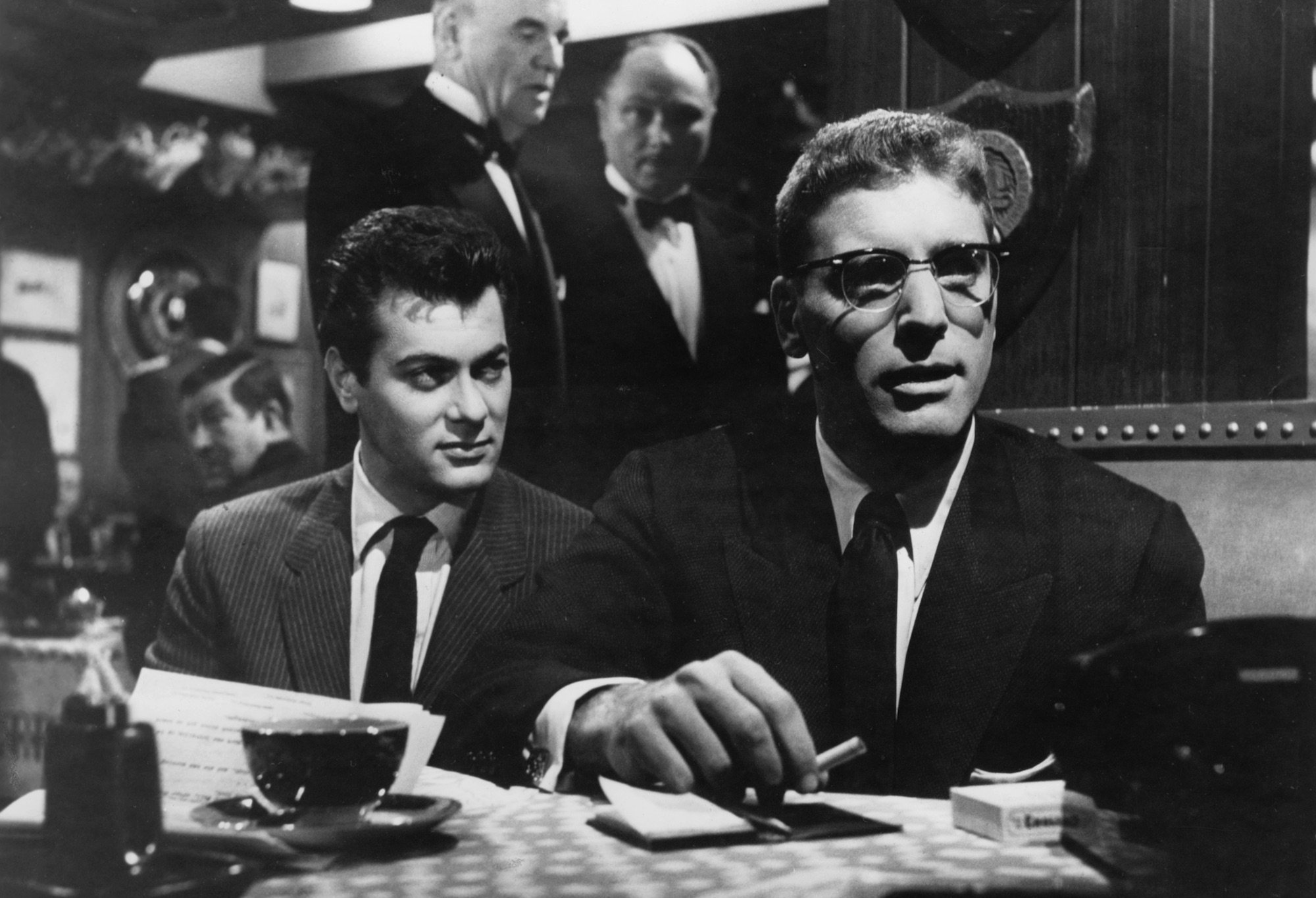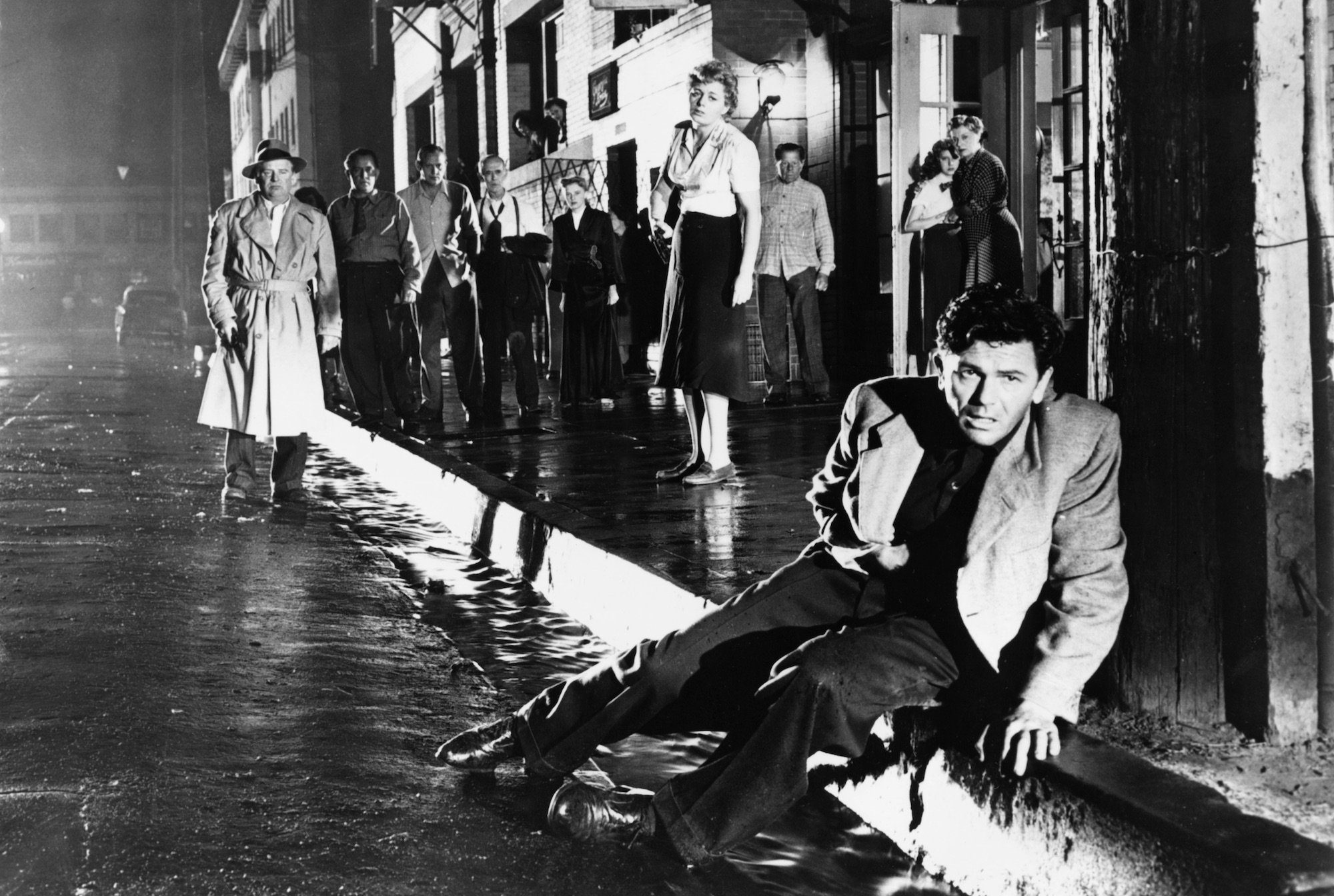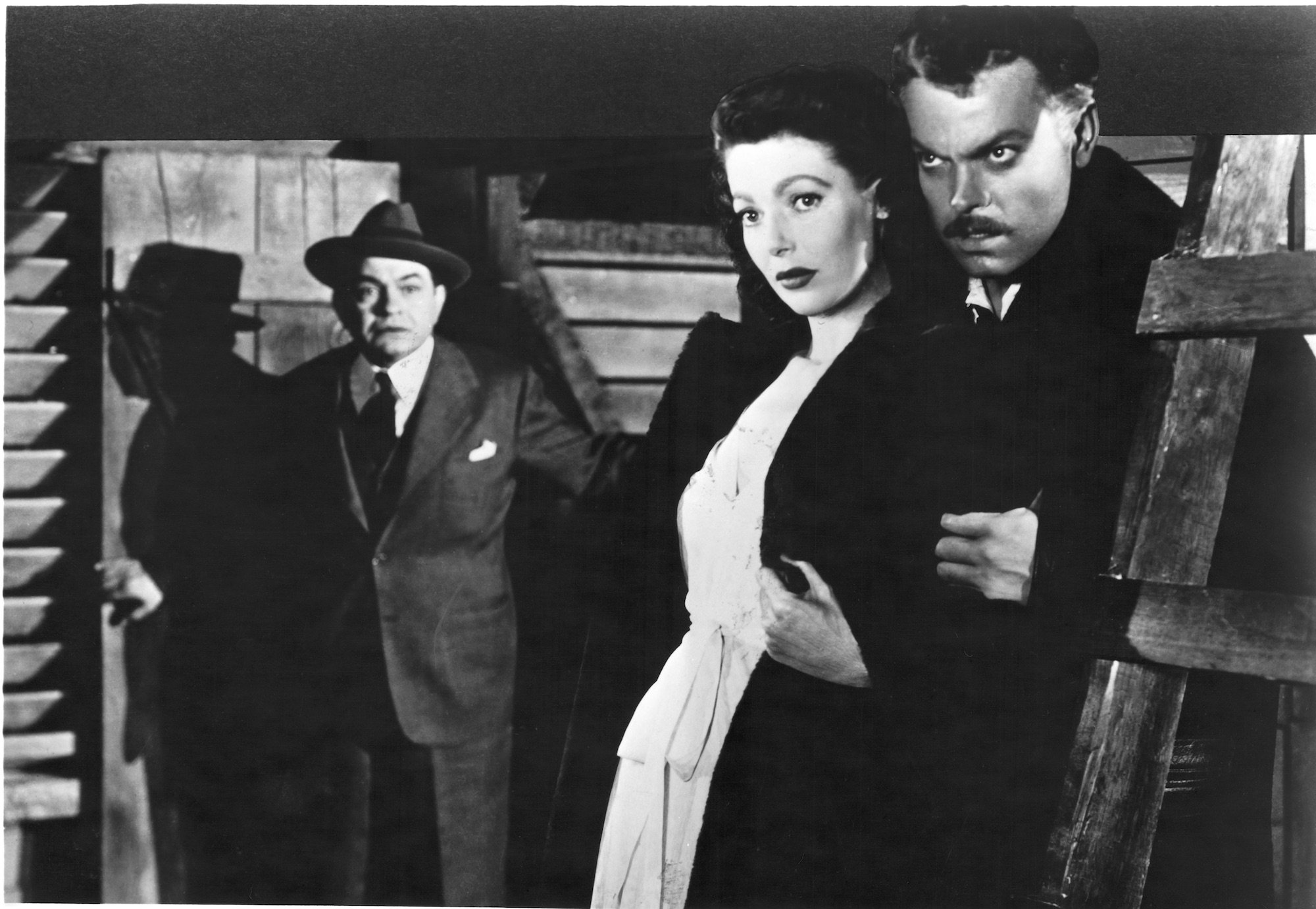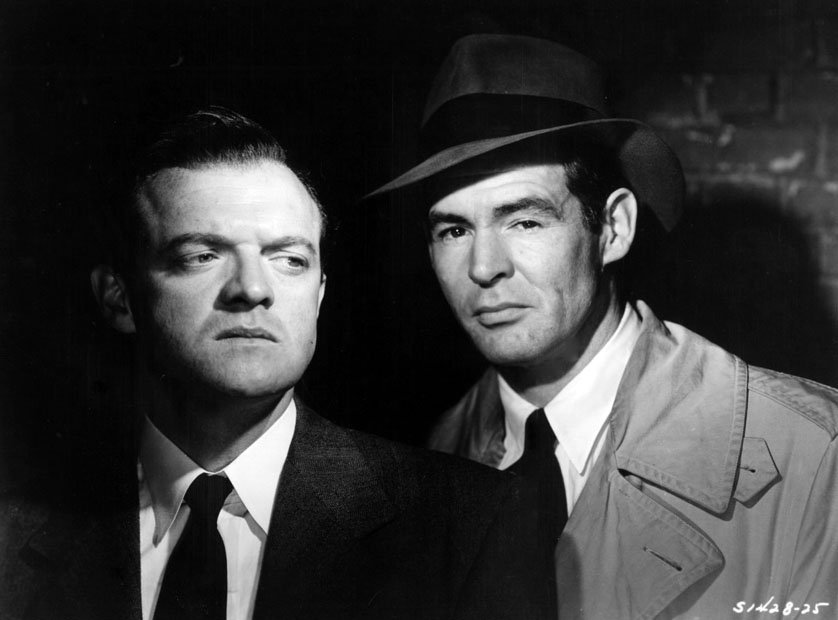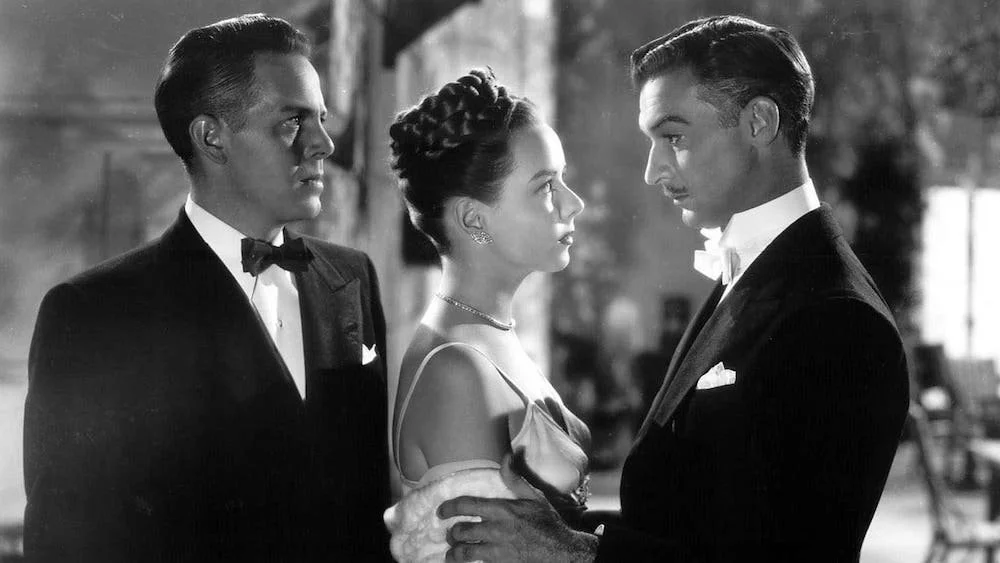Crossfire (7 pm)
1947 / 86 mins / b/w
Dir. Edward Dmytryk / Sc. John Paxton / Cine. J. Roy Hunt
Cast: Gloria Grahame, Robert Mitchum, Robert Ryan
35mm print courtesy of Warner Bros.
Introduced by Rob King, Columbia University
Hate Is Like a Loaded Gun!”
One of two 1947 films to deal explicitly with anti-Semitism – the other being the Best Picture-winning Gentleman’s Agreement – Crossfire is an adaptation of future director Richard Brooks’ 1945 novel The Brick Foxhole. It significantly reworks Brooks’s novel, however, whose plot originally centered not on an anti-Semitic hate-killing, but a homophobic one.
In one sense, this change was inevitable, since the strictures of the Production Code Administration considered homosexuality a “sex perversion” that could not be explicitly represented on the screen. (The PCA’s head, Joseph Breen, deemed Brooks’ novel “thoroughly and completely unacceptable.”) But Crossfire’s filmmakers – who included some of Hollywood’s most leftist talent – likely did not need the PCA’s restrictions: RKO’s new head, Dore Schary, and social-minded producer Adrian Scott already intended to change Brooks’ novel to address the rising tide of anti-Semitic bigotry in America following the war. The result is a mordant, and still timely, depiction of a postwar America united only in hate. “We just don’t know what to fight,” one character reflects early in the film. “You can feel the tension in the air. A whole lot of fight and hate that doesn’t know where to go.”
Crossfire was the third and last noir collaboration between Adrian Scott and director Edward Dmytryk (following Murder, My Sweet and Cornered), who both would be blacklisted just a few months after the film’s release.
Ace in the Hole (8:55 pm)
1951 / 111 mins / b/w
Dir. Billy Wilder / Sc. Walter Newman, Lesser Samuels, Billy Wilder / Cine. Charles Lang
Cast: Richard Benedict, Kirk Douglas, Jan Sterling
DCP courtesy of Swank
Introduced by Ron Gregg, Columbia University
“Nothing Stops Chuck Tatum...a Guy with Drive...Driving Down Everything that Gets in His Way – Man, Woman or Morals!”
“If the concentration camps and the gas chambers were all imaginary, then please tell me — where is my mother?” – Billy Wilder
Six years prior to the release of this desert-noir classic, Billy Wilder co-directed a brutal documentary short on the realities of the concentration camps. Death Mills was the work of a Jewish, Austrian-born filmmaker who had fled Europe during the 1930s. Wilder lost several of his family members to the Holocaust, including his mother. A deeply antagonistic film, Death Mills accosted the German people for their indifference to the Jewish genocide. As Wilder told it, 500 people attended the film’s preview screening, but only about 75 lasted the full 22 minutes.
A different genocide – that of Indigenous Americans – hangs over Ace in the Hole. Wilder’s most confrontational fiction film, Ace in the Hole merits “an honorary expansion of the term film noir,” to quote critic Molly Haskell. Following the Germans’ refusal to engage with Death Mills, Wilder crafted a narrative feature to smuggle his blunt-force critique of a society in denial. The film is an assault on “Mr. and Mrs. America,” the term protagonist Chuck Tatum (the late Kirk Douglas) uses to describe the rubes who show up to gawk at an Indian cave dwelling. Douglas, a Jewish performer, is believed to have had a crucial role in helping to break the Hollywood blacklist. His Tatum is manifest destiny incarnate: A cocky, culturally insensitive intruder who will do anything to grow his personal empire. A noir in spirit if not aesthetics, Ace in the Hole reveals Wilder’s outsider perspective of America as a land defined by crass consumerism and racist, genocidal origins.


